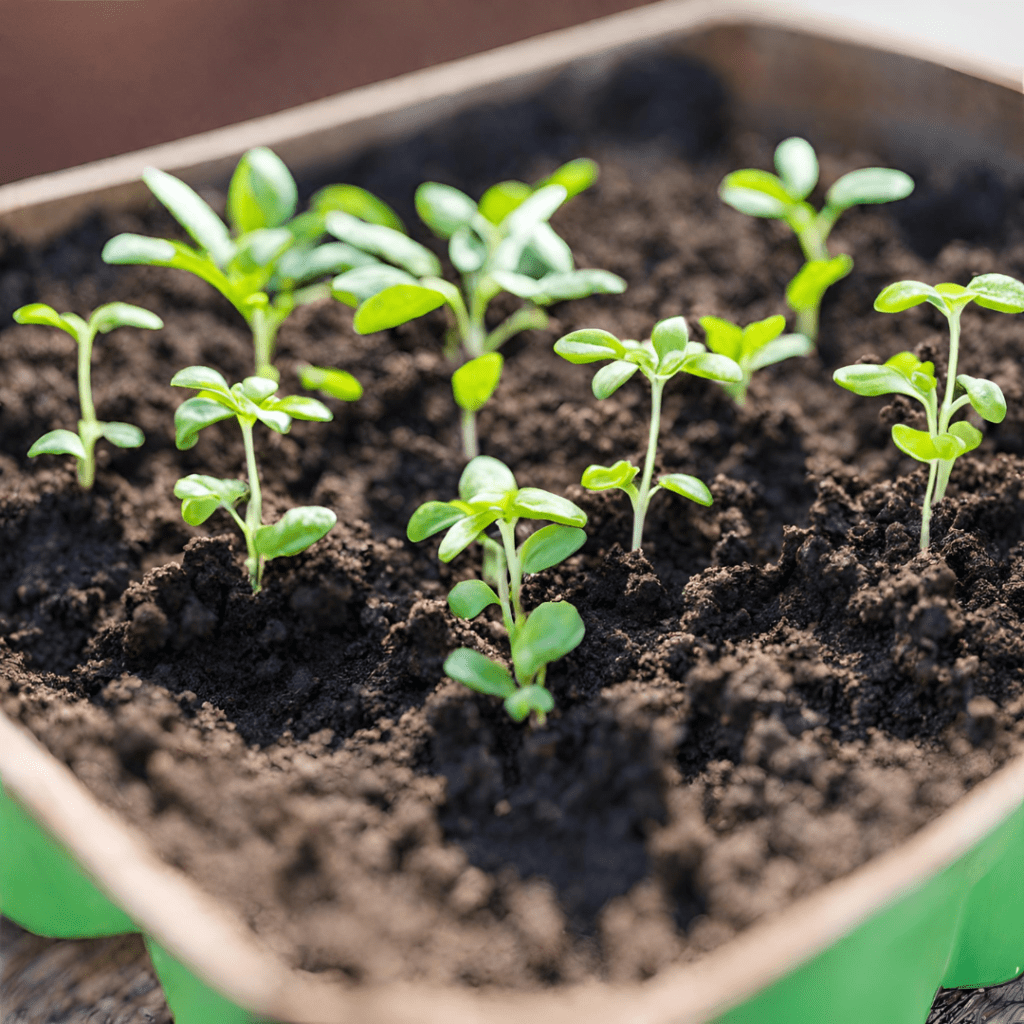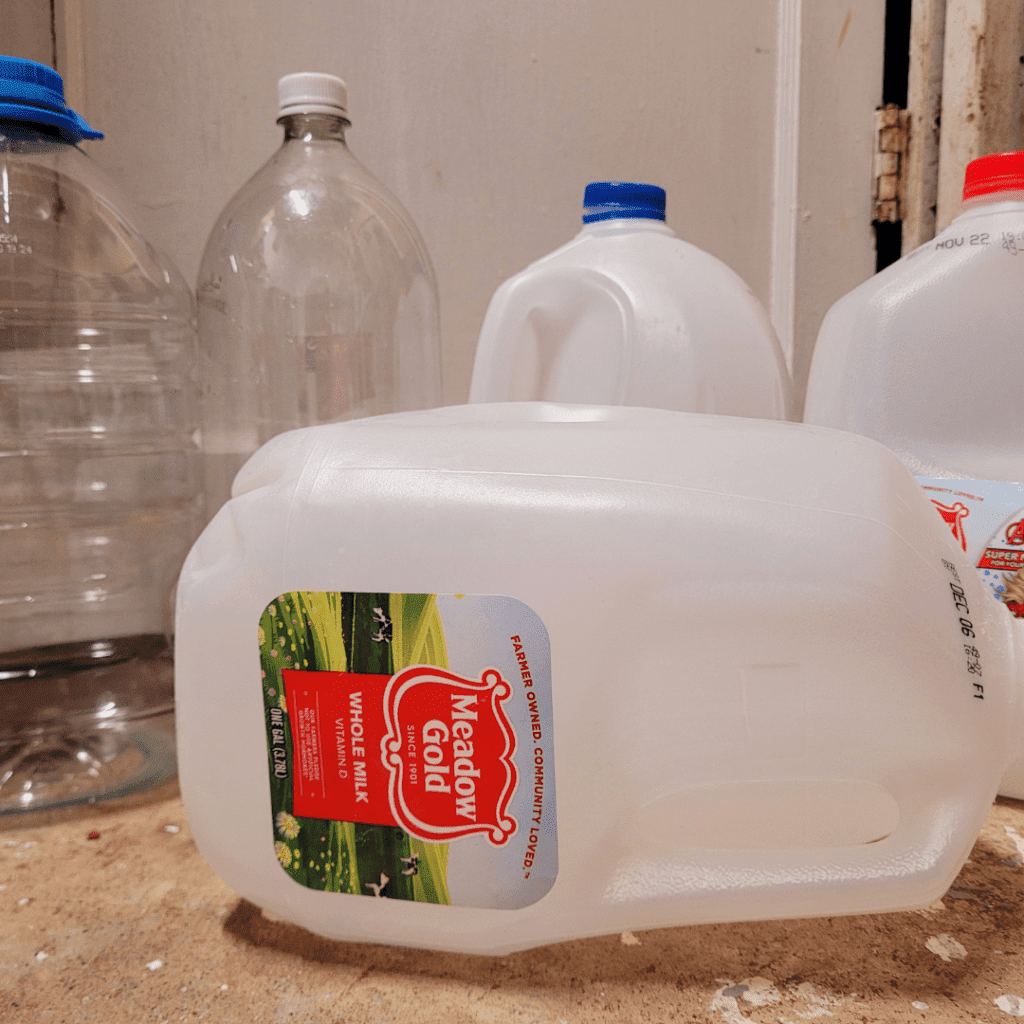Mastering winter sowing means learning the expert tips that make seed starting simple, affordable, and effective in cold weather. By using containers as mini greenhouses, choosing the right soil mix, and selecting hardy seeds, you can grow resilient seedlings that sprout at the perfect time. Discover how to succeed with winter sowing, even in chilly conditions, and give your spring garden a strong, healthy start.
Winter may seem like an unlikely time to start sowing seeds, but with the right knowledge and techniques, it can be an incredibly effective method for kickstarting your garden. Winter sowing is a gardening technique that takes advantage of the natural winter conditions to germinate seeds and grow seedlings in protected containers and mini greenhouses.
This article will guide you through the process of mastering winter sowing, providing expert tips and advice to ensure success even in the coldest of conditions. From understanding the method to selecting the right seeds, preparing containers and mini greenhouses, timing and sowing techniques, protecting and caring for your seedlings, troubleshooting common issues, and finally, harvesting the fruits of your labor, this comprehensive guide will equip you with the tools and knowledge necessary to become a winter sowing pro.
This is a pinnable post. Tap or hover over any image in this post to pin to your Pinterest Boards.
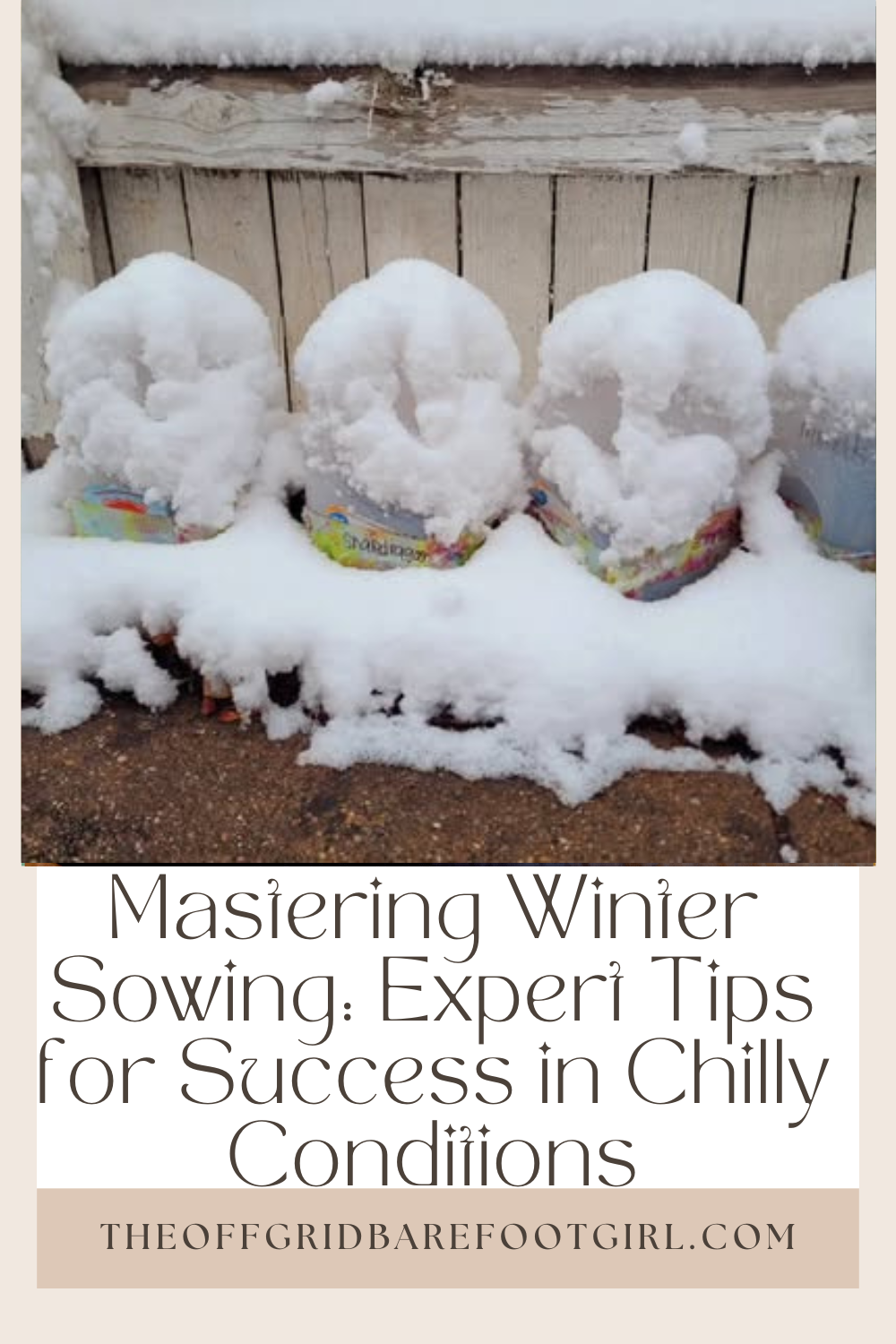
Understanding the Winter Sowing Method
What is Winter Sowing?
Winter sowing is like the gardening version of defying the odds. It’s a method where you sow seeds outdoors during the winter months when the ground is still frozen and the temperatures are frigid. It may sound counterintuitive, but it’s a clever way to give your plants a head start before spring arrives.
Benefits of Winter Sowing
The beauty of winter sowing lies in its simplicity and effectiveness. By sowing seeds during the cold season, you create a natural stratification process that mimics the plant’s natural environment. This gives the seeds a jumpstart and helps them grow stronger and more resilient plants.
How Does Winter Sowing Work?
Winter sowing takes advantage of the frosty conditions to break down the seed’s hard outer coating, allowing moisture and oxygen to penetrate. When spring finally comes around, your seeds will be primed and ready to germinate, making your gardening journey a whole lot smoother.
Selecting the Right Seeds for Winter Sowing
Choosing Cold-Hardy Seeds
Winter sowing is all about choosing seeds that can brave the chilly conditions. Look for cold-hardy varieties that can withstand frost and fluctuating temperatures without throwing in the towel. Tough plants like pansies, snapdragons, and calendula are great options for winter sowing.
Read more about which types of vegetables you can winter sow in my other posts!
- Top Winter-Sowing Vegetables for a Head Start in the Garden
- How to Grow Cold Hardy Greens for Winter Sowing
- Root Vegetables That Thrive in Winter Sowing: Ultimate List
Assessing Seed Viability
Before sowing, it’s crucial to check the viability of your seeds. You don’t want to waste time and effort on seeds that won’t germinate. Perform a simple germination test by placing a few seeds on a damp paper towel and sealing them in a Ziploc bag. Leave them in a warm spot for a few days and see how many sprout. If most of them do, you’re good to go!
Considerations for Different Plant Types
Different plants have different needs, so it’s important to consider their specific requirements. Some seeds, like those of perennials, may need a period of cold stratification to break dormancy, while others may benefit from scarification to help water penetrate the seed coat. Do a little research for each plant to ensure you’re giving them the TLC they deserve.
Preparing Your Containers for Winter Sowing
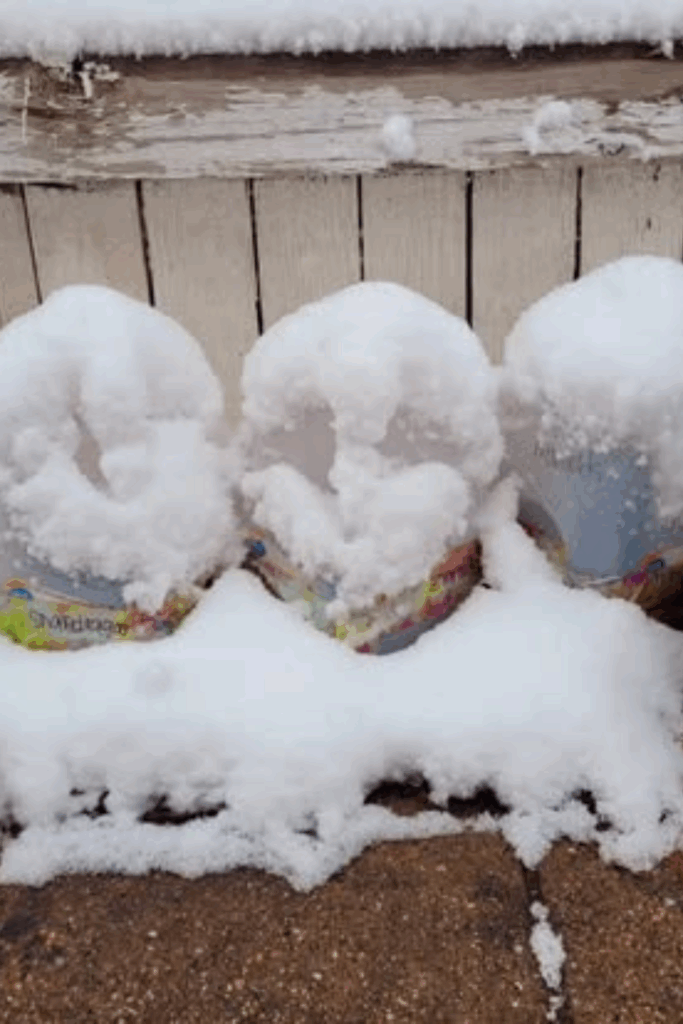
Selecting the Appropriate Containers
When it comes to containers, think outside the box. Literally. Instead of your typical pots, you can repurpose milk jugs, soda bottles, or even takeout containers. Just make sure they have a lid or can be covered to create a mini greenhouse effect. Read more about household items that make great winter sowing containers in my other post.
How to Repurpose Everyday Items into Winter Sowing Containers
Preparing Containers for Sowing
Cleanliness is key when prepping your containers. Give them a good scrub to remove any dirt or lingering bacteria that may harm your seeds. You can use a mixture of bleach and water or opt for an eco-friendly alternative like vinegar. Rinse thoroughly and let them air dry before sowing.
Creating Proper Drainage
Nobody likes soggy roots, not even plants. To ensure proper drainage, create small drainage holes at the bottom of your containers. This will prevent waterlogging and keep your seeds happy and healthy.
Timing and Sowing Techniques for Cold Weather
Determining the Ideal Sowing Time
Timing is everything, especially in the world of winter sowing. Different plants have different sowing schedules, so take the time to research when each seed should be sown. A general rule of thumb is to sow cold-hardy seeds around mid to late winter when the ground is still frozen, but the temperatures are milder.
Scarification and Stratification Methods
Some seeds may benefit from a little tough love before sowing. Scarification involves nicking or scratching the seed coat to help water penetrate and initiate germination. Stratification, on the other hand, replicates the cold winter period by pre-chilling the seeds in the fridge. These techniques can give some stubborn seeds the wake-up call they need.
Sowing Techniques for Different Seeds
Each seed has its own preferences, so it’s important to sow them accordingly. Smaller seeds can be sprinkled on top of the soil and lightly pressed down, while larger seeds may need to be planted at a specific depth. Follow the recommended instructions for each type of seed, and don’t be afraid to experiment and learn through trial and error.
Providing Adequate Protection and Care During Winter
Choosing the Right Location for Winter Sowing
When it comes to winter sowing, location is everything. You want to find a spot that offers the perfect balance of sunlight and shelter. Look for an area that receives enough sunlight to promote growth, but is also protected from harsh winds and extreme temperatures. In other words, you don’t want your seeds to feel like they’ve accidentally ended up in the North Pole.
Protecting the Sown Containers from Extreme Temperatures
Just like you grab a cozy blanket on a chilly winter night, your winter-sown containers need protection from the cold as well. Consider using insulating materials such as straw, bubble wrap, or even old blankets to shield them from freezing temperatures. And hey, if you have some spare holiday decorations lying around, why not give your plants a festive touch? Who says snowmen are only meant for the front yard?
Ventilation and Moisture Control
While it’s important to shield your plants from extreme temperatures, you need to find the right balance between warmth and ventilation. Your little seedlings need fresh air and proper moisture to thrive. Make sure to create small openings or vents in your containers to allow air circulation, prevent mold growth, and avoid trapping excessive moisture. Think of it as giving your plants a breath of fresh air, just like that moment you step outside after a long day indoors.
Transplanting and Caring for Winter-Sown Seedlings
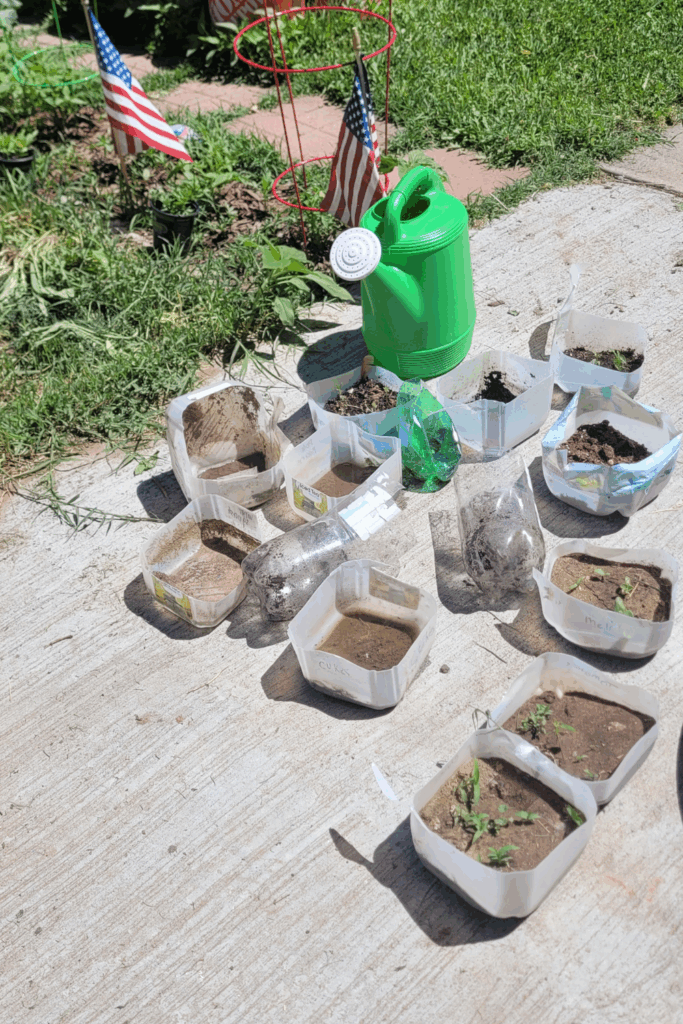
Hardening Off the Seedlings
Before you dive headfirst into transplanting your winter-sown seedlings, remember that they need a bit of tough love. Hardening off is like sending them to boot camp to prepare for the outside world. Gradually introduce your seedlings to outdoor conditions by exposing them to a few hours of sunlight, wind, and cooler temperatures each day.
Transplanting Seedlings into the Garden
Once your seedlings have toughened up, it’s time to give them their own space in the garden. Prepare the soil by loosening it with a garden fork or tiller, then gently transplant your seedlings, making sure to bury them up to their original soil line. Give them a pat on the back, or rather, a gentle pat in the soil, to ensure good contact between their roots and the soil.
Proper Care and Maintenance of Winter-Sown Plants
Congratulations, you’re now a plant parent! Your winter-sown plants will need some love and attention to reach their full potential. Keep them well-watered, but be careful not to drown them. And just like how you give yourself a little extra boost with some nutrients from time to time, consider using a balanced fertilizer to give your plants the nourishment they need. Remember, healthy plants = happy plants, just like healthy snacks = happy you (okay, maybe not exactly, but you get the idea).
Troubleshooting Common Issues In Winter Sowing
Dealing with Mold and Fungal Problems
Mold and fungi are like unwelcome guests at your winter-sowing party. If you spot any signs of mold or fungal growth, don’t panic. Simply remove the affected area and adjust the ventilation and moisture levels in your containers.
Addressing Pest Infestations
Pests are like the freeloading neighbors who try to crash your winter-sowing extravaganza. Keep an eye out for unwelcome guests like snails, slugs, or aphids. If you spot any intruders, you can try using natural remedies like soapy water or diatomaceous earth to deter them. And if all else fails, invite a friendly neighborhood bird to the party – they’ll gladly help with crowd control. Let your chickens feast on the pests. It’s poultry patrol to the rescue! Well, you get the idea.
Rescuing Damaged or Struggling Seedlings
Sometimes, despite your best efforts, a seedling may hit a rough patch. It’s like when you have a bad hair day or just feel a bit off. But fear not! You can try giving your struggling seedling some extra care, like providing a little shade or extra watering. And remember, even if a seedling doesn’t make it, it’s not the end of the world. The gardening journey is full of ups and downs, just like life. Learn from the experience and keep sowing those seeds of resilience.
Harvesting and Enjoying the Fruits of Winter Sowing
When and How to Harvest Winter-Sown Plants
The moment you’ve been waiting for has arrived – it’s harvest time! But when should you start plucking those juicy fruits of your labor? Keep an eye on each plant’s specific maturity timeline and look for signs like changes in color, firmness, or taste. And when it’s time to harvest, don’t be shy – get your hands dirty and enjoy the fruits (or veggies) of your winter sowing adventure! After all, this is why we do all this effort right?
Creative Ways to Use and Enjoy Your Harvest
Now that you have a bountiful harvest, it’s time to get creative in the kitchen or share the love with friends and family. Whip up delicious recipes using your freshly harvested produce or create homemade gifts that showcase your gardening skills. Embrace your inner master chef or crafty DIY enthusiast – the possibilities are as endless as the flavors and smiles you’ll create.
Celebrating Your Winter Sowing Success
You’ve mastered the art of winter sowing, and that calls for a celebration! Share your success story with fellow gardeners, throw a garden party, or simply treat yourself to some well-deserved relaxation in your beautiful outdoor sanctuary. Remember, gardening isn’t just about the end result; it’s about the joy, growth, and connections you foster along the way. So raise a glass, toast to your green thumb, and revel in the satisfaction of a job well done. Cheers!
Conclusion
By mastering the art of winter sowing, you can extend your growing season, save money on expensive greenhouse setups, and enjoy the satisfaction of nurturing plants from seed during the chilly months. With the expert tips and techniques outlined in this article, you’ll be well-equipped to successfully navigate the world of winter sowing. So embrace the cold weather and give winter sowing a try – you’ll be amazed at the beautiful and thriving garden that awaits you in the coming months.
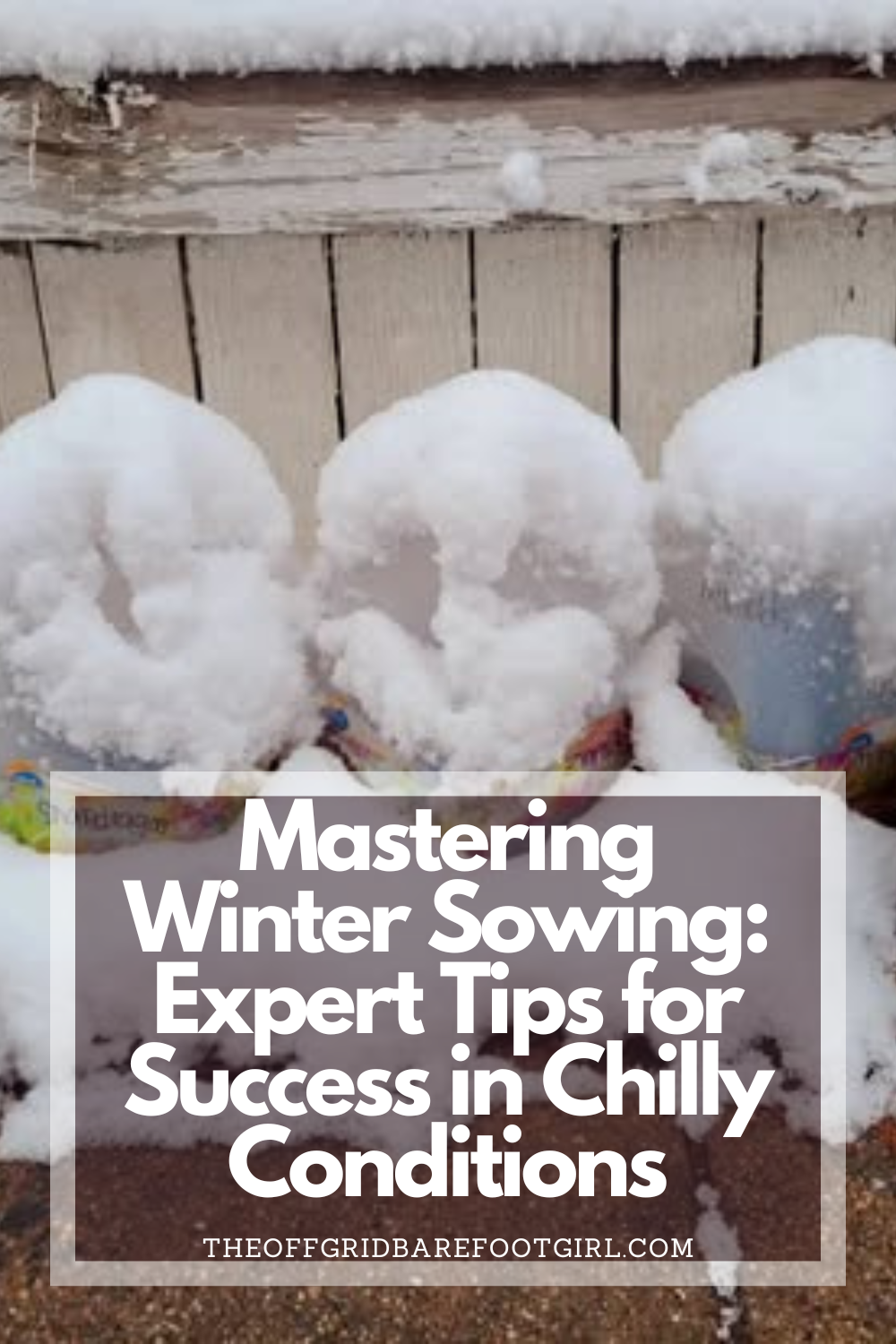
Frequently Asked Questions
1. Can I winter sow any type of seed?
While many seeds can be successfully winter sown, it’s important to choose cold-hardy seeds that can withstand the harsh winter conditions. Some examples include perennial flowers, cold-tolerant vegetables, and hardy herbs. Avoid sowing seeds that require warm temperatures to germinate.
2. Do I need a greenhouse or special equipment for winter sowing?
No, one of the advantages of winter sowing is that it doesn’t require a greenhouse or expensive equipment. You can use simple materials like recycled containers, plastic bags, or milk jugs to create mini greenhouses that protect the seeds and seedlings from the elements.
3. When is the best time to start winter sowing?
The timing for winter sowing can vary depending on your climate and the specific seeds you’re sowing. As a general guideline, it’s best to start winter sowing when temperatures consistently stay below freezing, but are not too extreme. Research the optimal sowing times for the specific seeds you plan to sow, or consult with local gardening experts for the best timing in your area.
4. What if I encounter mold or pest issues during winter sowing?
Mold and pests can sometimes be a challenge during winter sowing. If you notice mold growth, ensure proper ventilation and reduce moisture levels. If pests become a problem, you can try natural remedies like neem oil or insecticidal soaps. Additionally, practicing good sanitation and hygiene can help prevent these issues from occurring.
Summary
I hope I have inspired you to try your skills at winter sowing with these tips and products.
If you were encouraged by this post, I invite you to check out my FREE Printables Page for fun free printables, planners, and charts.
ENTER MY FREE Printables Page HERE
Here are some more of my winter gardening inspiration posts to check out!
How to Build Mini Greenhouses for Winter Sowing
How to Repurpose Everyday Items into Winter Sowing Containers
Root Vegetables That Thrive in Winter Sowing: Ultimate List
How to Grow Cold Hardy Greens for Winter Sowing
Top Winter-Sowing Vegetables for a Head Start in the Garden
Getting Started with Winter Sowing: The Ultimate Guide
The Benefits of Successful Winter Sowing for Vegetables in Containers
The Ultimate Guide to Choosing the Best Soil for Winter Sowing
Planning Your Garden: How to Plan a Vegetable Garden: Expert Green Thumb Tips!
Winterizing the Garden: How to Winterize Your Vegetable Garden: Step-by-Step Checklist
Mulching the Garden: How to Make Leaf Litter Mulch
How to Grow a Fall Garden: 9 Best Fall Crops
Blessings,
The Off Grid Barefoot Girl



